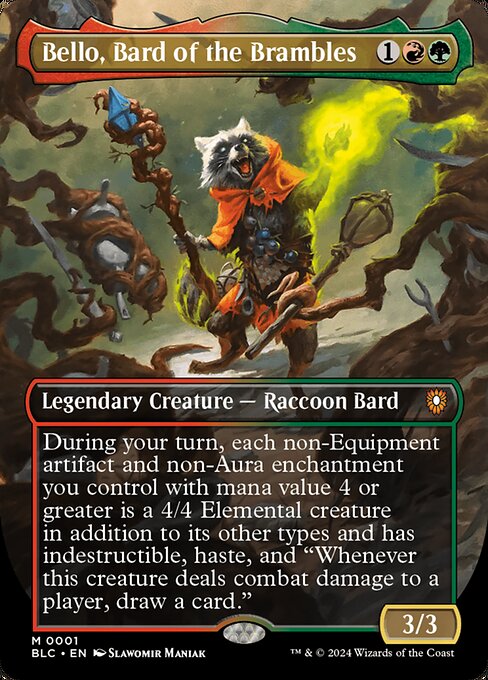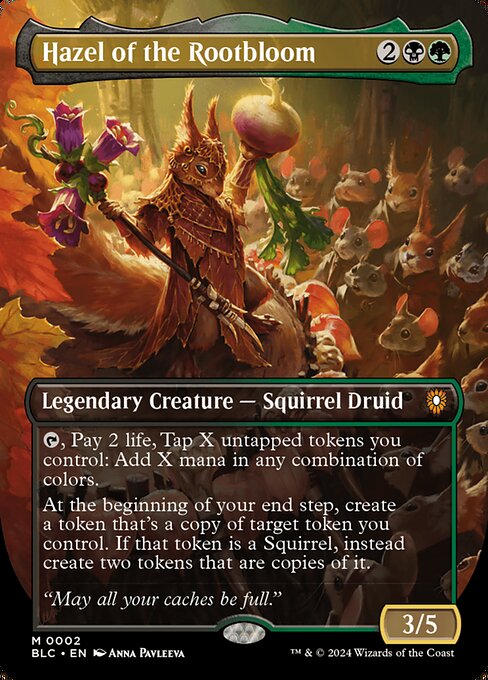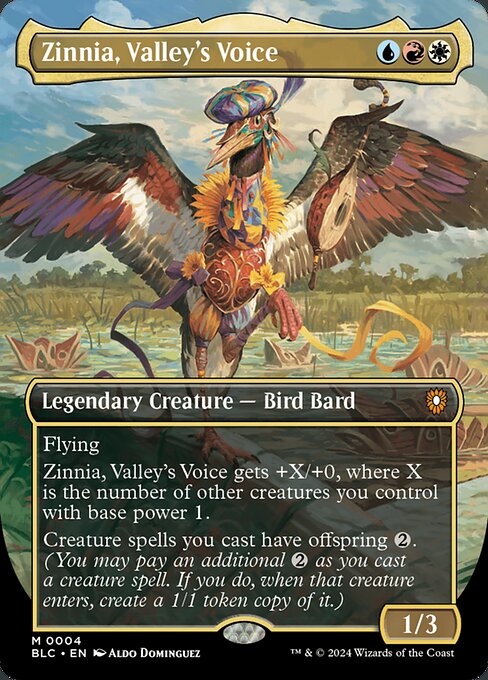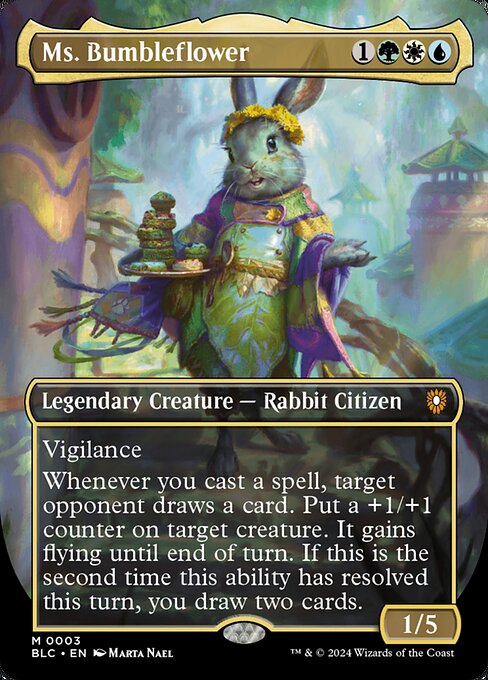Deck & Commander Strategies

Bello, Bard of the Brambles
Animate noncreature artifacts and enchantments with mana value four or greater into 4/4 Elemental creatures, leveraging artifact and enchantment permanents to create a threatening board.

Hazel of the Rootbloom
Ramp mana by tapping untapped tokens and paying life, then duplicate tokens at the beginning of the turn to quickly build a large board presence and generate overwhelming value.

Zinnia, Valley's Voice
Go wide with many creatures, especially those with base power one, and exploit the Offspring mechanic to create token copies of creatures for a rapidly expanding board and aerial threats.

Ms. Bumbleflower
Play a group hug style deck that draws cards for opponents when you cast spells, buffs creatures with +1/+1 counters and flying, and uses card advantage and friendly interaction to control the flow of the game.
Gameplay Insights
- 1
Hazel's use of token duplication and life payment to ramp mana was a key acceleration strategy that threatened to overwhelm opponents if unchecked.
- 2
Ms. Bumbleflower's group hug mechanics created interesting dynamics by drawing cards for opponents and buffing creatures, influencing combat decisions.
- 3
Bello’s ability to animate high mana cost artifacts and enchantments required setting up the board with the right permanents, showing a slower but potentially powerful mid-game strategy.
- 4
Zinnia capitalized on the Offspring mechanic to double creatures entering the battlefield, rapidly increasing board presence and pressure through flying threats.
- 5
Players engaged in careful early combat to test each other's defenses and provoke responses without overcommitting, maintaining a cautious balance as each built their strategy.
Notable Cards
-
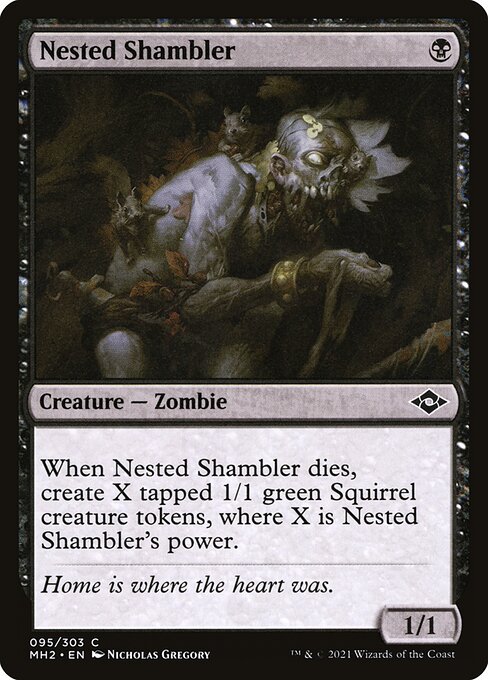
Nested Shambler
-
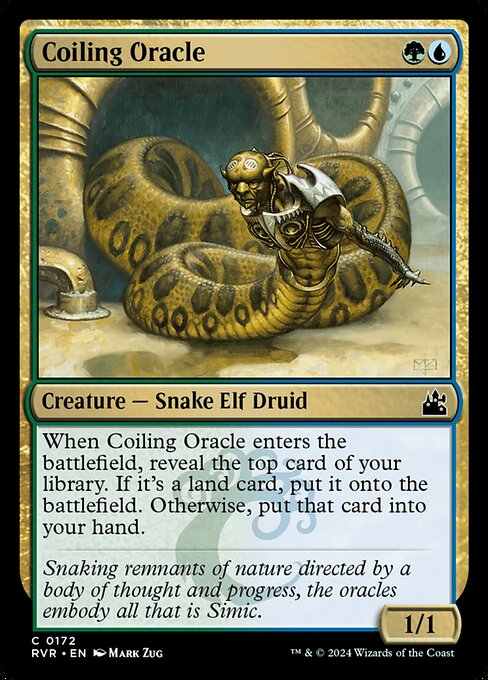
Coiling Oracle
-
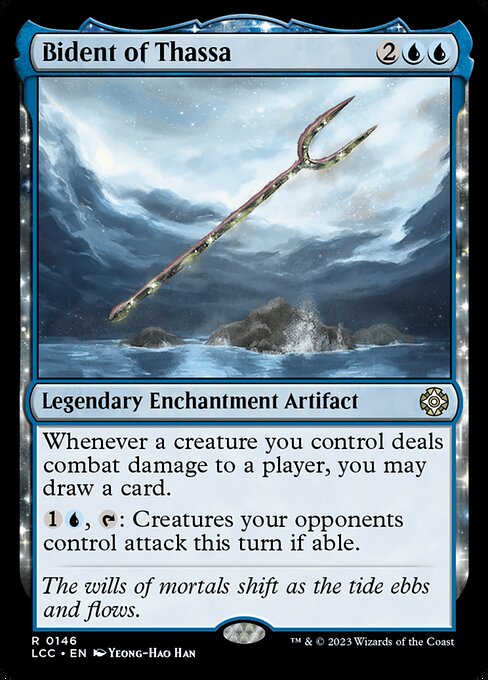
Bident of Thassa
-

Terramorphic Expanse
-

Evolving Wilds
Gameplay Summary
The game began with players developing their mana bases and deploying early creatures and enchantments that set up their respective strategies.
Hazel of the Rootbloom focused on ramping and token duplication, leveraging her ability to copy tokens and generate mana by tapping untapped tokens and paying life.
Ms. Bumbleflower employed a group hug style, drawing cards for opponents and distributing buffs, aiming to foster a dynamic board state.
Bello, Bard of the Brambles animated artifacts and enchantments of mana value four or greater into 4/4 Elemental creatures, though early in the game he lacked sufficient permanents to animate.
Zinnia, Valley's Voice played a go-wide strategy with a focus on creatures with base power 1 and the newly introduced Offspring mechanic, which doubled creatures entering the battlefield for increased board presence. Key moments included Hazel using token duplication to accelerate mana and board presence, while Ms. Bumbleflower's group hug draws and buffs helped maintain card advantage and influence combat phases.
Bello's strategy of animating artifacts and enchantments showed potential as the game progressed and more permanents entered the battlefield.
Zinnia’s ability to fly and create token copies of creatures cast allowed for a rapidly growing board state, which became a significant threat.
Players interacted with combat cautiously, with some early swings to test defenses and provoke responses.
The game showcased a blend of aggressive token strategies, card draw and group hug, and unique board animation, with players adapting to each other's moves and leveraging their commanders’ synergies to build toward their win conditions.


